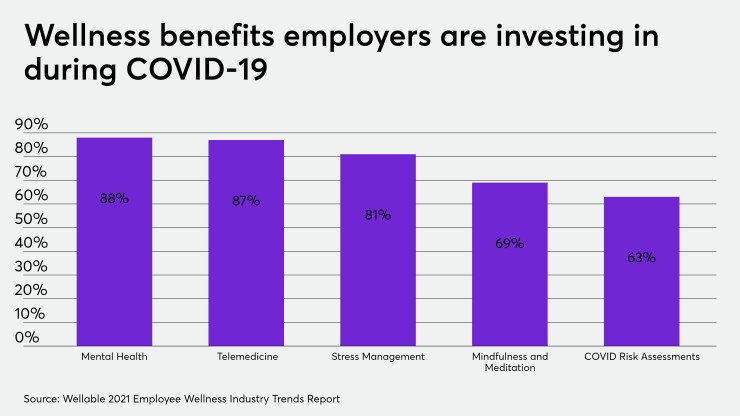While navigating the COVID-19 pandemic, employers are making long-term investments to help their employees achieve
The majority of employers — 92% — have expanded the support they offer employees as it relates to
“The events of the past year have presented an opportunity for many employers to leverage their employee well-being programs to address the unique challenges created by the pandemic,” said Shams Talib, head of Fidelity Workplace Consulting in a press release. “As a result, we’ve seen many employers, including Fidelity, evolve their well-being programs to provide greater support for emotional and mental well-being and an increasing focus on diversity, equity and inclusion.”
Read More:
Seventy-four percent of employers say they plan to expand their well-being programs and resources over the next three to five years, according to the survey, and 24% say they plan to continue these efforts at their current rate.
Benefits have become increasingly important as employers and employees navigate a post-COVID world. Forty percent of workers are willing to switch jobs in order to secure better benefits, according to a survey from
Employers need to be flexible and remain on their toes when it comes to offering the benefits employees want most. This new versatility in the workplace appears to be the new normal, and not the exception, according to Ellen Kelsay, CEO of Business Group on Health.
“As employers around the globe continue to ramp up their well-being offerings, we will see a healthier and more engaged workforce,” Kelsay says. “In addition, we expect businesses to continue to demonstrate flexibility and support employee needs through leave, hybrid work and other benefits.”
The Fidelity survey found that employers are investing up to $6 million dollars into employee wellness plans, up from $4.9 million in 2020. Those funds will go toward parental leave benefits,
Read More:
“As we gradually return to a pre-pandemic work environment, employers will continue to try new and different things,” Talib says. “We expect they will leverage their learnings and feedback from employees to continue to find ways to address multiple dimensions of their employees’ well-being.”






